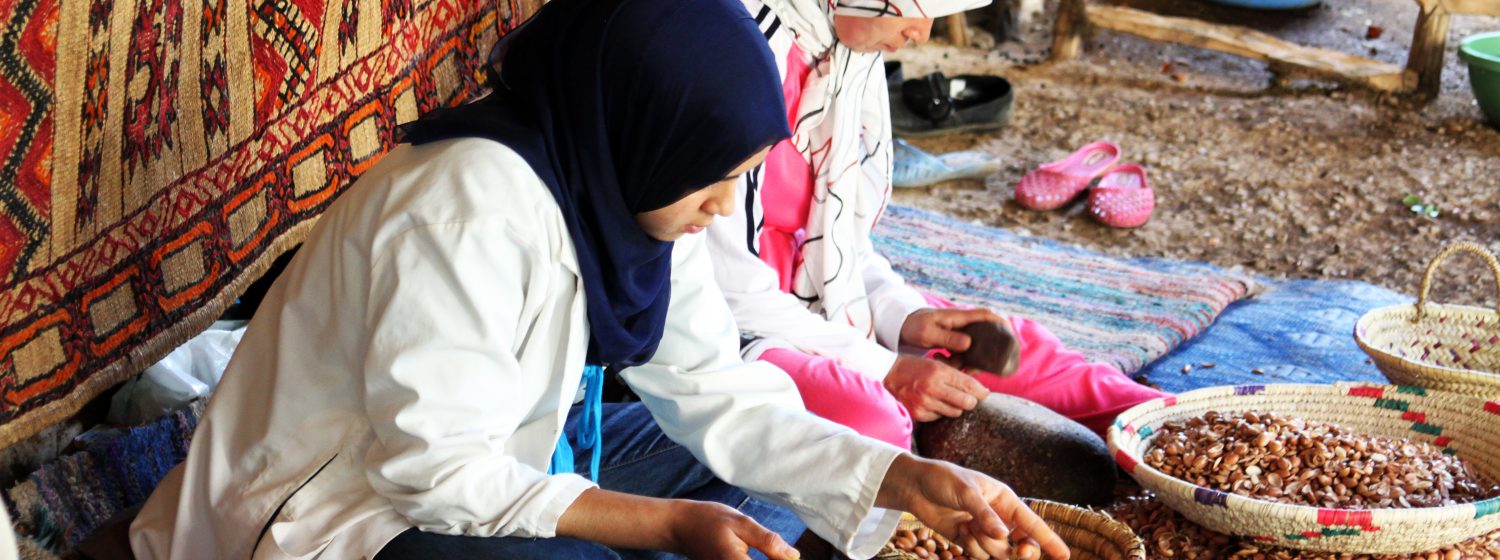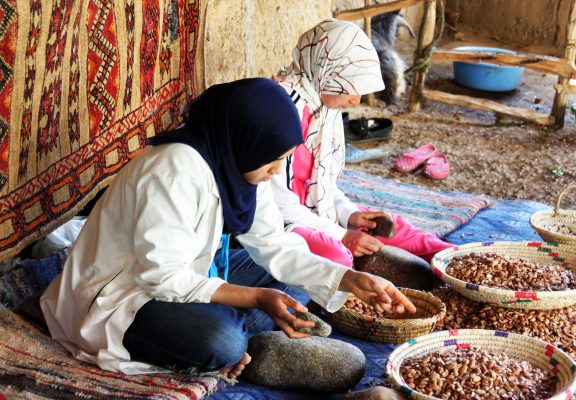


Morocco
Morocco, a North African country bordering the Atlantic Ocean and the Mediterranean Sea, is distinguished by its Berber, Arabian and European cultural influences. Its population is 33 million and GDP per capita income of USD 3,190.
Morocco is an upper lower-middle income country that has enjoyed relative political stability in a region affected by “”Arab Spring”” civil disruptions. As in other countries of the Middle East and North African region, AIDS-related deaths and new infections are on the rise in Morocco. HIV prevalence among the general population is low, but remains high among key populations, including men who have sex with men, people who inject drugs, female sex workers and prisoners. TB remains a major public health problem in Morocco, affecting more urbanized and populated regions, as well as prisoners.
AHO PRIORITIES FOR HEALTH DELIVERY PLAN IN MOROCCO
- Comprehensive care for children.
- Prenatal care, care in childbirth, and reproductive health care.
- Care in medical and surgical emergencies.
- Communicable disease control; prevention and control of communicable diseases by strengthening the epidemiological surveillance system, epidemic alerts, timely interventions, and improvements in the national network of human biology and public health laboratories.
- Basic dental care.
- Participatory health education.
- Environmental sanitation.
- Provision of safe drinking water.
- Availability of and access to essential drugs.
- Strengthening of community participation.
- Creation of opportunities for multi-sectoral coordination and articulation with the various agents/actors in the health system, including traditional medicine.
- Development of a human resources policy.
- Research geared to problem-solving.
- Legislation that defends the interests of the population.
PROGRAMMES & PROJECTS
1. HEALTH SYSTEMS AND SERVICES DEVELOPMENT
PURPOSE
To help to strengthen the capacity of AHO in the following areas:
- Policy-making and regulation
- Decentralisation of the system and services
- Management
- Human resources development
- Access to health services, chiefly through the essential drugs program and regulation of the pharmaceutical sector
EXPECTED RESULTS
- Necessary technical assistance provided to optimise the health reform
- AHO’s capacity to ensure planning, management, and staff training strengthened
- Technical assistance provided to facilitate the development of regulations to govern the pharmaceutical sector.
- Necessary technical support provided for improving the capacity of AHO to draw up an official national list of essential drugs
- Active participation in the mobilisation of human and financial resources to implement the Essential Drugs
- Greater support provided for the regulation and organisation of the logistical network for essential drugs.
- Lines of work and activities appropriate to the technical and administrative implementation of technical cooperation in the country developed.
2. ENVIRONMENTAL HEALTH AND HEALTH PROMOTION
PURPOSE
To strengthen the capacity of public and private institutions to participate in the areas of environmental health and health promotion, with a view to improving the quality of life of the population, in physical, social, and mental health terms.
EXPECTED RESULTS
- Performance of the Drinking Water and Sanitation Sector (EPA) strengthened through dynamic coordination, the strengthening of public and private institutions, effective sectoral reform, the mobilization of investment, and improvements in the use of water supply systems.
- Environmental impact on health regularly monitored, especially through adequate legislation, regulations, and standards, staff development, and the regional integration of the programs of specialized institutions.
- Solid waste management in secondary cities improved through the adaptation and the problem of hazardous biomedical waste from the departmental hospitals controlled.
- Food safety and the safe use of chemicals supervised through the passage of suitable laws, sanitary inspection, staff development, and the dissemination of appropriate technologies.
- Healthy settings situation improved, with emphasis on healthy environments in health promoting schools, public markets, the workplace, and health institutions.
- Capacity of the national institutions strengthened in terms of disaster preparedness, especially drinking water and sanitation systems, hospitals, and health centres.
- Advocacy carried out to ensure that specific gender considerations are included in all programs and projects receiving AHO support.
- Healthy lifestyles throughout the life cycle promoted in the municipalities of the priority Commune Health Units .
- Strategies and advocacy to promote the adoption and implementation of new regional priorities by national and local authorities (violence, mental health, workers’ health, tobacco control, health of older adults, etc).
3. ENVIRONMENTAL HEALTH AND HEALTH PROMOTION
PURPOSE
To contribute to a reduction in infant and maternal mortality, morbidity from tuberculosis, and the prevalence of STI-HIV/AIDS by supporting the components of the National Strategic Plan of the Health Sector geared to the prevention and control of priority illnesses and health problems in the country.
EXPECTED RESULTS
- Technical support for implementation of the strategic plan for the reduction of maternal mortality guaranteed at the national level and in priority
- Availability of essential obstetrical care, emergency obstetrical care, and perinatal care strengthened in referral hospitals in priority through the building of technical capacity, supervision, and evaluation.
- Technical support for the prevention of cancers of the reproductive system guaranteed at the national level.
- Care for the health problems of adolescents and young people improved in priority through staff development.
- Technical support strengthened for implementation of the epidemiological surveillance system for STIHIV/AIDS and TB.
- Access to quality services for the prevention and control of STI-HIV/AIDS and TB provided through the application of new standards of care, information campaigns, staff development, and surveys and audits of care.
- Transfusion safety improved throughout the blood collection and distribution network through the updating of standards, training, and supervision.
- Support provided for improving the human resource competencies in the implementation, evaluation, and updating of plans.
- Technical support for strengthening the regular program ensured through staff development, logistical management, and monitoring of the cold chain.
- Technical support for strengthened by ensuring the program’s visibility through the operationalization of communication and financial viability plans.
- Technical support at the local level ensured by strengthening epidemiological surveillance.
- Technical support provided to boost its capacity to meet the regional objectives of eliminating measles and neonatal tetanus
4. PROGRAM DEVELOPMENT, ADMINISTRATION, AND COORDINATION
PURPOSE
To improve AHO technical cooperation for addressing priority health problems in the countries through a reliable Administration that performs.
EXPECTED RESULTS
- Streamlined administration created with regulations that clearly respond to project and cooperation needs.
- Effective administrative management of resources with a direct impact on health projects and operations.
- Reliable administration with modern, functional, and safe offices.
5. EPIDEMIOLOGY, ANALYSIS , AND SURVEILLANCE OF COMMUNICABLE AND NONCOMMUNICABLE DISEASES
PURPOSE
Epidemiology, analysis, and surveillance of communicable and noncommunicable diseases
Contribution to the development of a health information system by strengthening epidemiological surveillance, the capacity to process epidemiological information, and operations research.
EXPECTED RESULTS
- Technical support provided for improving the national health information system.
- Technical support provided for epidemiological surveillance of communicable and noncommunicable diseases at the local and commune levels.
- Improvements in the national laboratory network and the equipping of the central diagnostic laboratory facilitated.
- Contribution made to the development of Haiti’s surveillance system in the subregions to respond to their problems.
- Improved research capacity and information dissemination promoted nationally
- Operations research facilitated for priority health programs.
- Measures for the control of vector-borne diseases bolstered with technical support, training, and supervision.
- Capacity for management, monitoring, and evaluation improved with the mobilization of resources for zoonosis control.
RESOURCES (USD)
AHO MOROCCO 2020 (USD million)* based on 2017 pop 35.74 million World Bank
| SO | BUDGET ITEM | AMOUNT* |
| 1 | Combating communicable diseases |
595 |
| 2 | Tackling non communicable diseases |
600 |
| 3 | Addressing determinants of health & risk factors |
590 |
| 4 | Modernising health system and health service |
594 |
| 5 | Improving preparedness, surveillance and response |
598 |
| 6 | Developing good governance & corporate services |
597 |
| Total |
3,574 |
AHO estimates that it needs to spend at least USD100 per capita on health to meet the basic health needs of the people in Africa. This is too far below developed countries e.g. in England it is US$1,300 per capita (2017)

